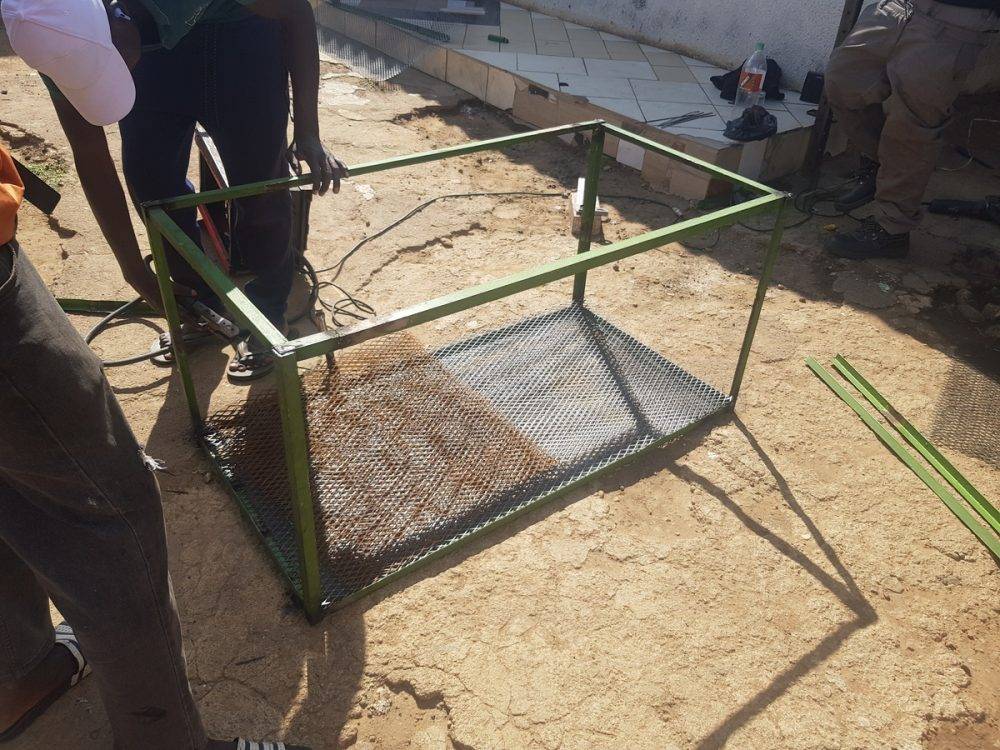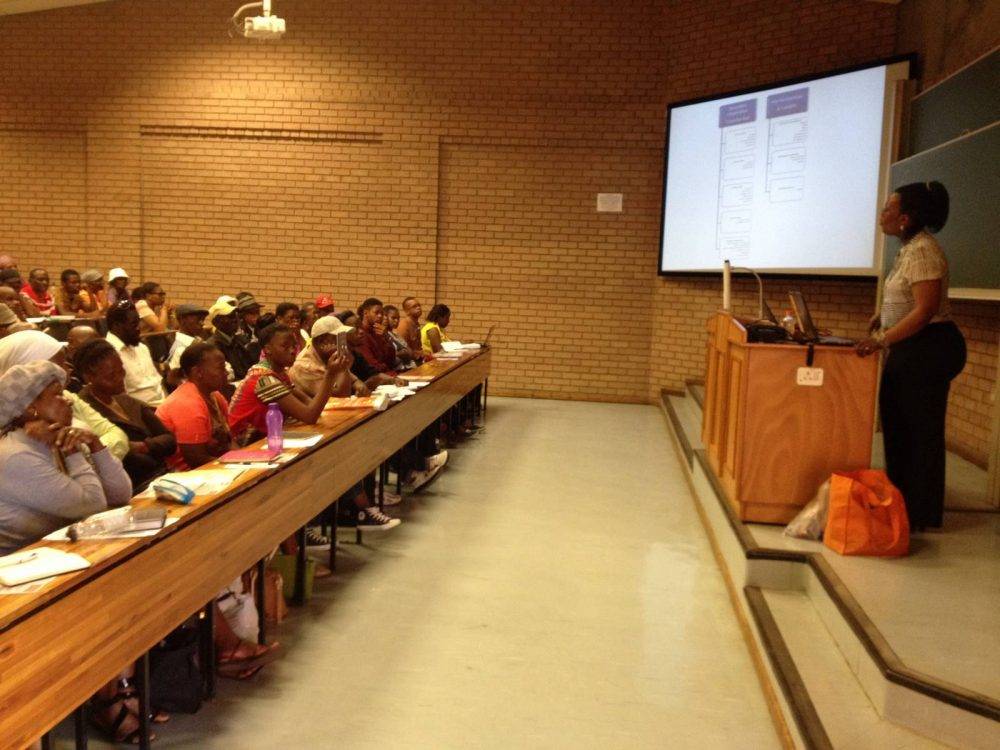With basic training and technology, urban farmers can create lower prices and address waste issues
Urban agriculture is often thought of as a novelty but rural farming has always been designed to feed urban settlements. Indeed, the first cities accompanied farming. Today, rural agriculture is inextricably linked to urban food markets — but this system has holes in it.
There are parts of countries — and whole countries — that this global food marketing system does not serve. Urban food production has been with us for a long time and manifests in these holes in the food system.
Modern agriculture is optimised for rural large-scale cultivation and produces more food than people can consume. But these ways of farming are not appropriate to urban food production, which occupies a place decidedly at the margins of agricultural science, urban planning and entrepreneurship.
Instead, it is promoted in diverse ways, to ensure food security, for therapy, landscape services and jobs or income. Urban agriculture is often seen as exotic or quaint, which affects how it is supported. This is often done from an outsider’s perspective which doesn’t help urban farmers.
There is much to be done to develop urban farming further. To do so, we need to understand how a viable enterprise can be created at this place in the economy.
Several scenario-based studies show that urban agriculture could supply cities with fruit and vegetables if about 30% of urban land is devoted to it. This could encourage us to investigate urban agriculture as a viable means of food production, but such broad generalisations need to be adapted to local contexts to make them meaningful. Urban agriculture can be ineffective, and there is a lot to still be done to make it a respectable means of food production and to enable it to create decent livelihoods.
Urban agriculture is already part of much township life, and there are sizable numbers of plots and empty spaces located close to urban areas that potentially could be used for food production.
There may be more than 2.5 million households involved in household food production in South Africa. This is more than the number of informal businesses out there and is perhaps the largest singular sector in the South African economy. Many, by default, depend on such food production, especially for supplementary feeding.
Urban agriculture is emerging worldwide, but it is determined to a great extent by the conditions immediately surrounding it. In the United States municipal farmers markets and the SNAP (Supplemental Nutrition Assistance Program) “food stamps” drive it, while in Europe,some funding reaches smaller producers through their CAP (Common Agricultural Policy) initiative. In cities and countries without state support for agriculture, and settlements outside of the marketing system — like Kinshasa — it is the default choice.
Urban agriculture does deliver some benefits, but it is often entangled in several ancillary concerns and is not taken seriously as an enterprise development opportunity. Many urban farmers have never had any real training and do not farm proficiently. Rural agriculture, on the other hand, across most of the world does enjoy state support. But many still make a success of urban agriculture, outside of the food system and outside the agricultural R&D and education system, as the contributions to the Mail & Guardian indicate.

I have been involved with urban agriculture for almost a decade, and have realised, by mentoring urban agricultural entrepreneurs, that a decent livelihood can be created through it. This has enabled me to develop materials and package them as a coherent course in urban agriculture enterprise development.
iZindaba Zokudla has been active in developing technology, learning and engagement between urban farmers, the University of Johannesburg and other stakeholders since 2014.
It offers an informal course to urban farmers, and these materials are in the process of being developed into a short learning programme for urban agriculture at the university. In the meantime, the course, “Nxazonke: Circles of urban agriculture enterprise development” is open and available to anyone and is archived on the net.
Urban agricultural enterprises have a unique economic opportunity that lies before them. Nxazonke is based on a strategic analysis of the food system, which found key economic opportunities urban agriculture can seize on and aims to create viable enterprises among urban farmers that respond to these opportunities. This is perhaps one of the greatest enterprise development challenges of all time. Many approach this in an ad hoc way, and many urban farmers are being led astray.
Being small,and able to produce only small volumes of food (at high quality), urban farmers must sell at the highest possible price. They must engage in retail sales themselves, as this is necessary to create a beneficial profit structure from low input production and capital costs, and high-value retail sales.
They must command the whole value chain, engage in input manufacture and be almost completely vertically integrated to achieve this profit profile. Their possible margins depend on keeping cost almost at zero while reaping the full value of the produce they supply. The opportunities they can seize correspond with the holes in the current food system, and there are several sales, production, engagement and technological strategies they can benefit from.
The course is organised to seize these opportunities. One course is on food production. Food can effectively be produced with high-intensity biological methods. The cornerstone of this is deep trench or above-ground trench beds. These can be made very fertile, and the benefits should be multiplied by stacking on “top of” the beds, an irrigation system, a tunnel, intercropping, mulching, pollination, specialist fertilisers (that can be made yourself) and the use of good quality seeds. These can be developed at almost zero cost, but need planning, investment, labour and design to create the most benefit.
Biological technologies mean that anyone can tinker with ecosystem design. These means of production are the staple of current approaches to urban agriculture, and many have developed excellent materials on this. They are indeed effective, and their most important feature is their low cost, which makes it possible to build a steep profit profile — but to achieve this, an enterprise needs to sell at the retail level.
To enable the kind of production above, technology has to be adapted and innovated. There is a rich tradition of intermediate and appropriate technology development, which needs to be operationalised for urban agriculture. Highly productive technologies include water bottle irrigation systems, worm tea collection, livestock urine collection, and liquid manure production.
Food waste and biowaste can be harvested with “compost cages”, waste “tumblers” and other simple technologies, or even in a compost pile to ensure a steady supply of inputs for an urban farm.
Small farmers like urban farmers need to sell incredibly effectively to make food production at small scale worthwhile. Most urban farmers are survivalists, and the key to overcoming this is high-value production, which a deep trench approach affords us to do. But after this, effective sales strategies are needed. Here real sustainable innovation is possible, as an urban farm has to be completely vertically integrated, and this includes the opportunity to harvest urban wastes at low cost in exchange for food. All urban farms should have a sizable portion devoted to composting and input production. These bring additional revenue streams to that of food sales.
Food should be sold at competitive prices by urban farmers, and this is only the beginning of a sales strategy. They should develop their own shops.

Urban farmers can integrate food sales with waste harvesting, and this has significant effects. Discounts on food sales can be given to customers who collect and bring food, biowaste and recyclables to the urban farm. Customers lower their food prices in this way. Urban farmers can also develop harvest specials, integrate with linear supply chains — particularly with staples — and also sell convenience products such as sweets at “spaza” shops.
Exchanging food for food waste and recyclables, which are already being collected informally, will make a decisive difference in these fledgling enterprises. This ensures low-cost farming inputs and a second revenue stream. It also enables a circular enterprise design, and here innovation is further possible on the spaza motif: this now includes a waste service and a food production system. Food prices can be lowered by the harvesting of waste by poor clientele themselves, with significant food security effects.
An urban farm can integrate with the community with both digital and face-to-face events. This makes sense in a context where customers will help in securing inputs and co-create food prices. Engagement methods will create a vested interest by the customer in the farm itself. Communities can be taught about production and the safety of biological methods. This is part of a sophisticated price co-creation method, that will secure the functioning of the farm through engagement with the customer.
This opportunity can be extended further and can include education about nutrition, food prices, production and the importance of healthy food in community life. This can be combined into a marketing strategy, and this is part of the enterprise development journey that urban farmers can take that can build entrepreneurial capacity where it can make a difference.
This will re-create a relationship with food, particularly in places where supermarkets do not serve communities well, and offer us a new approach to supporting urban agriculture that goes far beyond treating it as a novelty in our cities. We need to invest in this practice, as it can offer a real alternative to industrialised foods.
iZindaba Zokudla is offered at the UJ’s Soweto Campus once a month during university term. The programme uses both local and university experts and is well-attended. This offers hope and a development path for small and urban farmers, who are often discouraged by the high entry costs of commercial agriculture.
Food systems have to change to respond to climate change. Developing urban agriculture can not only produce the next generation of able farmers but offer an enterprise solution where we can build in preferable climate and social effects.
To achieve these outcomes, the enterprise has to be designed from scratch. We are lucky that we can do so, and achieve these slippery targets as we empower urban South Africans economically.
This story is the third in a series on urban farming.
Professor Naudé Malan is the convenor of iZindaba Zokudla. He works for the Department of Business Management at the University of Johannesburg’s Soweto campus